Brown Recluse Spider
ENTFACT-631: Brown Recluse Spider | Download PDF | En Español
by Michael F. Potter, Extension Entomologist
University of Kentucky College of Agriculture
Many types of spiders live around homes and buildings. Most are harmless, and many are beneficial given they prey upon other nuisance insects, like mosquitos or flies.
One spider found in Kentucky and much of the Midwest that is potentially dangerous is the brown recluse. It is sometimes referred to as the ‘violin’ or ‘fiddleback’ spider because of the violin-shaped marking on its dorsum. Although brown recluse spider bites are rare, the venom can sometimes cause serious wounds and infestations should be taken seriously.

Fig. 1: Brown recluse spiders often have a fiddle-shaped marking.
Distribution and Diagnosis
The brown recluse spider, Loxosceles reclusa, is found throughout the south central and Midwestern United States. Infestations in Kentucky are more common as one travels westward. Other species of Loxosceles spiders occur in the southwestern U.S. and southern California, but the brown recluse is the most notable and widespread. Recluse spiders are rare outside their native range. In general, these spiders are widely over-reported and less common than perceived. Occasionally, one or a few spiders may be transported to a non-native area in boxes or furnishings, but infestations seldom become established.

Fig. 2: Distribution of the brown recluse spider (dark shading) and other species of Loxosceles spiders in the U.S. (light shading) (adapted from distribution map of R. Vetter, Univ. Calif. Riverside).
Though variable in size, adult brown recluse spiders with legs extended are about the size of a U.S. quarter. Coloration ranges from tan to dark brown, and the abdomen and legs are uniformly- colored with no stripes, bands or mottling. The legs are long and thin and lack conspicuous spines. For laypersons, the most distinguishing feature of a brown recluse is a dark violin-shaped mark on its back, with the neck of the violin pointing toward the rear (abdomen) of the spider. This feature is consistent in adult brown recluses, but sometimes less obvious in younger spiders.
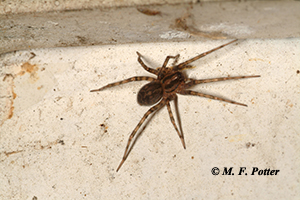
Fig. 3: The banding on the legs of this wolf spider is one indication that it is not a brown recluse.
A more definitive diagnostic feature is the eye pattern -- brown recluses have a semi-circular arrangement of six eyes (three groups of two) while most other spiders have 8 eyes. Seeing this feature requires a good quality hand lens. Many harmless brown spiders are mistaken for the brown recluse, so it is prudent to have specimens confirmed by an entomologist or knowledgeable pest control firm.
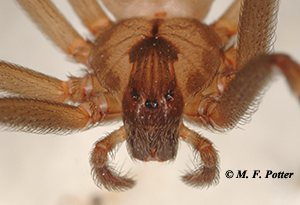
Fig. 4: Brown recluse spiders have three pairs of eyes, arranged in a semi-circle.
Habits and Development
In nature, brown recluse spiders live outdoors under rocks, logs, woodpiles and debris. The spider is also well adapted to living indoors with humans. They are resilient enough to withstand winters in unheated basements and stifling summer temperatures in attics, persisting many months without food or water. The brown recluse hunts at night seeking insect prey, either alive or dead. It does not employ a web to capture food — suspended webs strung along walls, corners, ceilings, outdoor vegetation, and in other exposed areas are almost always associated with other types of spiders. In homes, such webs are often produced by harmless cobweb or cellar spiders. While sometimes considered a nuisance, spiders like the cobweb or cellar varieties prey upon other pests (including brown recluses), and in this sense could be considered beneficial.

Fig. 5: Cobweb spiders (left) and cellar spiders (right) often build webs in homes, but are harmless.
During daylight hours, brown recluse spiders typically retreat to dark, secluded areas. They often line their daytime retreats with irregular webbing, which is used to form their egg sacs. Adult female recluses seldom venture far from their retreat, whereas males and older juveniles are more mobile and tend to travel farther. Consequently, they are more likely to wander into shoes, clothing or bedding at night and bite people when they inadvertently become trapped against the skin. At times, brown recluse spiders will be seen during daylight hours crawling on floors, walls and other exposed surfaces. Such behavior can be triggered by hunger, overcrowding, pesticide application, or other factors.
About 40-50 eggs are contained within 1/3-inch diameter off-white silken egg sacs. The tiny emerged spiders gradually increase in size, molting five to eight times before becoming adults. The molted (shed) skins of the brown recluse have a distinct outstretched appearance and can be useful in confirming infestation.
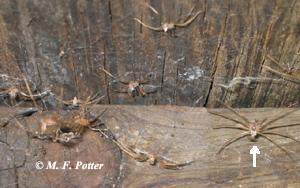
Fig. 6: Shed skins of a brown recluse spider
Brown recluse spiders mature in about a year and have an average lifespan of 2 to 4 years. The females produce up to 5 egg sacs in a lifetime. Infestation levels in homes vary greatly, ranging from one or a few spiders to several hundred.
Bites and Medical Significance
Like other spiders, the brown recluse is not aggressive. It is quite common, in fact, to live in a building that is heavily infested and never be bitten. Most bites occur in response to body pressure, when a spider is inadvertently trapped against bare skin. Some people are bitten when they roll over a brown recluse in bed. Other bites occur while moving stored items or putting on a piece of clothing that a spider has chosen for its daytime retreat. Brown recluse spiders have very small fangs and cannot bite through clothing.
The initial bite is usually painless. Oftentimes the victim is unaware until 3 to 8 hours later when the bite site may become red, swollen, and tender. The majority of brown recluse spider bites remain localized, healing within 3 weeks without serious complication or medical intervention.
In other cases, the victim may develop a necrotic lesion, appearing as a dry, sinking bluish patch with irregular edges, a pale center and peripheral redness. Often there is a central blister. As the venom continues to destroy tissue, the wound may expand up to several inches over a period of days or weeks. The necrotic ulcer can persist for several months, leaving a deep scar.
Infrequently, bites in the early stages produce systemic reactions accompanied by fever, chills, dizziness, rash or vomiting. Severe reactions to the venom are more common in children, the elderly, and patients in poor health. Persons bitten by a brown recluse spider should apply ice, elevate the affected area, and seek medical attention immediately.
Medical Misdiagnosis
Spider bites are difficult to diagnose, even by physicians. Contrary to popular belief, it is difficult to diagnosis a brown recluse spider bite from the wound alone. Many medical conditions mimic the necrotic-looking sore from a recluse bite, including bacterial and fungal infections, diabetic and pressure ulcers, and gangrene. Several misdiagnoses have arisen from outbreaks of drug-resistant infections by Staphyloccus aureus (commonly referred to as a Staph infection). That bacterium produces painful skin lesions that resemble recluse bites, and can run rampant in close living quarters such as hospitals, camps, barracks, and correctional facilities. Similar-looking lesions can also be caused by other types of insects and arthropods.
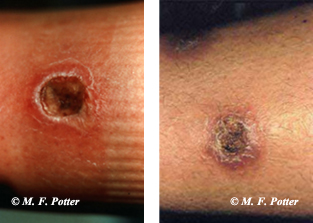
Fig. 7: Many medical conditions are mistaken for brown recluse bites.
The wound on the left is from a recluse spider, the one on the right from a bacterial infection.
Suspected bites occurring outside the native range of the brown recluse spider are particularly unlikely, given that surveys rarely yield recluses in non-native areas. Presumptive bites become even more unlikely if thorough inspection of the premises yields no sign of brown recluse spiders. If possible, anyone bitten by what is thought to be a brown recluse should try to collect the specimen and bring it to a qualified individual for identification. Even crushed or damaged specimens can usually be identified. Confirmation by an expert will help the physician decide on the appropriate course of treatment.
Controlling Infestations
Brown recluse spiders are difficult to eradicate, largely because of their secretive habits. Virtually any dark, undisturbed area can serve as harborage, and many such places occur within buildings. Because of this (and the potential health threat), treatment is best performed by professionals.
Where They Hide – Thorough inspection with a bright flashlight is needed to reveal the location and extent of infestation. Likely hiding places include crevices, corners, and wall-floor junctures, especially behind clutter and stored items. Reducing clutter affords fewer places for the spiders to hide and can enhance effectiveness of treatments. Brown recluse spiders may also live behind walls, and inhabit the voids within concrete block foundations. In infested garages, attics, basements and crawl spaces, the spiders, egg sacs, and distinctive shed skins are often found along joists, sills and rafters, as well as under rolled insulation. In living areas, they sometimes inhabit crevices behind and beneath beds and furniture, closets, clothing, shoes, and stored items. When sorting through boxes or materials, wear long sleeves and gloves to avoid being bitten. Brown recluse spiders also live above suspended ceilings, behind baseboards and woodwork, and within ducts and registers.
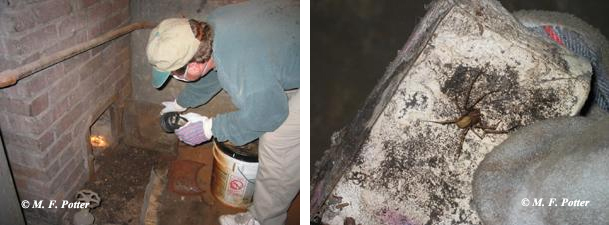
Fig. 8: Thorough inspections are needed to detect and treat hidden infestations.
Outdoors the spiders may be found in barns, sheds, woodpiles, and under anything laying on the ground. They also commonly reside behind shutters. Migration indoors can be reduced by moving firewood, building materials, and debris away from foundations. Sealing cracks and holes in a building's exterior can further help to keep these, and other pests, outdoors. Some of the more common entry points for brown recluse spiders include gaps under doors, vents and utility penetrations, beneath the bottommost edge of siding, and where eaves and soffits meet the sides of buildings. Outdoor populations of brown recluse spiders are less common in the northern portions of its range.
Use of Glue Traps – An excellent way to survey for brown recluse is to install flat, sticky cards known as glue traps. Often used to capture mice and cockroaches, the traps can be purchased online or at grocery, hardware or farm supply stores. The best glue traps for capturing the spiders are flat, like thin pieces of sticky cardboard without a raised perimeter edge.
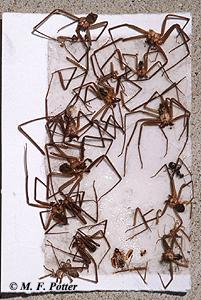
Fig. 9: Brown recluse spiders caught on a glue trap.
Several traps should be placed into corners and flush along walls.
The more glue traps used the better — dozens placed throughout a home will reveal areas where spiders are most abundant. Traps should be placed in corners and along baseboards and wall-floor junctures, especially behind furniture and clutter since spiders tend to travel in these areas. Besides being useful for detection, glue traps can capture and kill large numbers of spiders, especially the males, which are more likely to wander into places where people are accidentally bitten. Ongoing eradication efforts can be judged by the number of new spiders caught in traps. Glue traps should be installed before applying insecticides since some products will cause spiders to become active and wander into traps.
Use of Insecticides – Brown recluse spider elimination will often require use of insecticides. Some spiders will not be caught in glue traps, especially the adult females, which stay hidden more so than male spiders. Insecticides should be applied into cracks and other areas where spiders are likely to be hiding, attempting to contact directly as many as possible. Liquid, aerosol, and dust formulations may be employed.

Fig. 10: Insecticides are often needed to control infestations.
Dust insecticides are particularly effective for treating cracks along baseboards, sills, joists and rafters in basements, crawl spaces, and attics. Dusts also work well when treating under insulation, within voids of concrete block foundations, and behind light switch and outlet plates to contact spiders traveling along wires from attics. Effective dust insecticides include Cimexa®, Drione® and Tri-Die® (silica gel), Tempo® (cyfluthrin), and DeltaDust® (deltamethrin). Apply the dust as a fine deposit barely visible to the naked eye. Spiders and other pests tend to avoid powdery accumulations much as we would avoid walking through a snowdrift. The easiest way to apply such a small amount is with a ‘bellows’ hand duster sold in hardware stores or online.
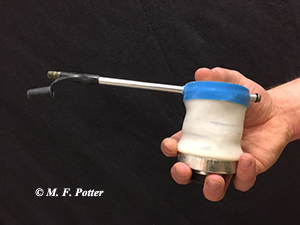
Fig. 11: Dust formulations are easier to apply with a bellows duster.
Insecticides can also be sprayed into harborages and places where spiders tend to travel. Effective ingredients (e.g., cyfluthrin, bifenthrin, deltamethrin, lambda cyhalothrin) are often found in products used to control cockroaches, ants, and other crawling insects. The sprays can also be applied outdoors (behind shutters, the bottommost edge of siding, along foundations, etc. Total-release pesticide foggers known as ‘bug bombs’ are seldom effective against these spiders, and should only be considered when treating otherwise inaccessible areas.
Avoiding Bites
As control measures are being implemented, precautions can be taken to further reduce the chance of being bitten. Beds should be moved away from walls, and remove any bed skirts/dust ruffles to break contact with the floor. Shoes and clothing should also be kept off floors, or at least shaken out before wearing. Remove excess clutter and store seldom used items in plastic storage containers. There may be some comfort in knowing that bites are a rare occurrence, even in dwellings where brown recluses are abundant.
Revised 7/12/18
CAUTION: The use of some products may not be legal in your state or country. Please check with your local county agent or regulatory official before using any pesticide mentioned in this publication. ALWAYS READ AND FOLLOW LABEL DIRECTIONS FOR SAFE USE OF ANY PESTICIDE.
Please note that all photos in this publication are copyrighted material and may not be copied or downloaded without permission of the author.
